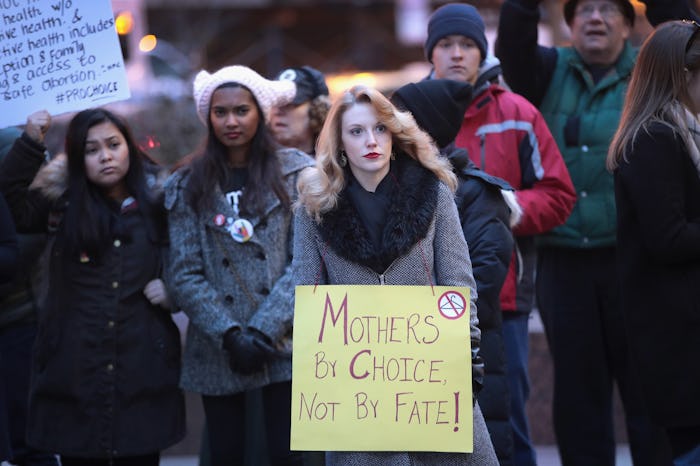Life

How Title X Actually Decreases Abortions
Now that Vice President Mike Pence has cast his tie-breaking vote, the Senate is one step closer to allowing states to block Title X family planning funds from health providers that perform abortions. The next step will be to see if President Donald Trump signs the bill. But while this bill is a measure to prevent abortions, there is a chance that it will actually result in more abortions. Here is how Title X actually decreases abortions.
For more than 40 years, federal funding has been blocked from being used for abortion services thanks to the Hyde Amendment. (The Hyde Amendment makes exceptions under Medicaid funding for abortions in cases of rape, incest, or if the mother's life is at risk, but it doesn't make those exceptions for Title X funding.) This means that the bill, if signed into legislation, could make it harder for 4 million low-income women to obtain cancer and STD screenings offered at women's health clinics around the country, according to data from The National Family Planning & Reproductive Health Association.
Planned Parenthood reported that every year, Title X helps prevent 1 million unintended pregnancies because the funding makes birth control more affordable for women everywhere: especially low-income women. More than 34 percent of Planned Parenthood's services are contraceptive services.
More than 6 million women become pregnant every year. Guttmacher Institute, an organization dedicated to reproductive health rights, reported that 926,200 abortions were performed in 2014. That number has decreased by 12 percent since 2011, from 1.06 million.
The National Family Planning & Reproductive Health Association reported that, in 2012 alone, Title X services prevented 363,000 abortions by making contraceptives affordable to low-income women. The Guttmacher Institute reported that the main reason abortion rates have decreased is because women have better access to contraception.
While one-quarter of Planned Parenthood's budget comes from Title X, it's important to remember that there are other clinics that may face greater losses. While Planned Parenthood affiliates make up 12 percent of the 4,400 clinics that receive Title X, state health departments make up 37 percent, according to the National Partnership of Women and Families.
Women in more conservative states may face higher rates of unintended pregnancy and abortions if their state leaders choose to block Title X funding from clinics that perform abortions. Just look at Texas.
In 2012, Texas cut it's family-planning budget by two-thirds, which resulted in over a dozen women's health clinics closing, The New York Times reported. Almost half of 300 pregnant women seeking an abortion surveyed by the Texas Policy Evaluation Project said that they were "unable to access birth control" in the three months before becoming pregnant. Not surprisingly, Texas has the second highest rate of unintended pregnancy in the country.
Mother Jones reported that some of the remaining clinics in Texas started charging a fee for doctors visits. Some even stopped offering more expensive contraceptive methods such as the IUD in favor of birth control pills, but they often gave out fewer packs of pills per visit, which made it more difficult for women to take the pill consistently, according to Mother Jones. Although birth control pills have a 99 percent rate of effectiveness at preventing pregnancy, 9 out of every 100 women become pregnant on the pill because they miss some or take it inconsistently.
Having to pay a fee to make a doctor's visit that used to be free, or having to make a long trip to a clinic because the closest one to you shut down may seem like minor inconveniences to some. But for more than a few women, these "inconveniences" could put them in the very difficult position of deciding how to deal with an unintended pregnancy. And, the more funding we take away from allowing women to plan for those decisions, the more often they'll be stuck with the expensive choice to abort or the even more expensive choice to carry and raise a child they couldn't or didn't plan for.